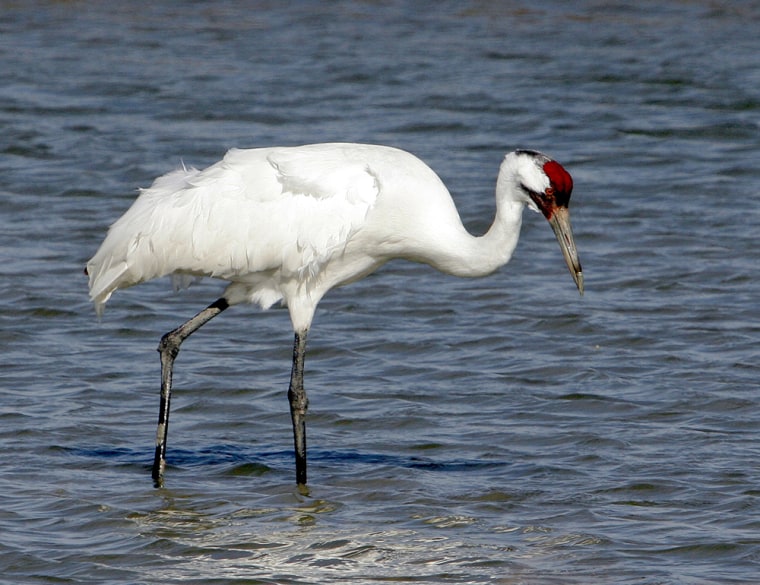Once down to about 15, the world's only naturally migrating flock of whooping cranes has continued its comeback, now numbering a record 237 birds in wintering grounds along Texas' Gulf Coast.
U.S. Fish and Wildlife Service biologist Tom Stehn, who tracks the flock, said 45 cranes were born last year, including a rare seven sets of twins.
He credited the increase to mild weather at their nesting grounds in Wood Buffalo National Park in northern Canada's boreal forest. There, the birds begin their 2,500-mile migration route from their summering grounds to Texas.
"They avoided having that cold weather hit, that just-above-freezing and drizzle that seems to kill the chicks," he said.
Stehn flies at low altitudes over the 35-mile stretch of Texas coastline where the birds feast on blue crab and wolfberries. The cranes tend to stay in family groups in territories about a mile wide.
Stehn, who plots the groups on photocopied maps of the areas, counted 220 of the endangered species in 2005.
Wildlife officials say the whooping crane, the tallest bird in North America, illustrates how a concerted effort of legislation and public awareness can help a species rebound.
While far from reaching the kind of numbers enjoyed by the gray whale and American peregrine falcon on the Fish and Wildlife Service's list of recovered species, the crane's numbers have slowly increased since counting began in 1938.
It took most of the 20th century to educate people about the whooping crane.
"People in the 1920s were really realizing how rare they really are," Stehn said, attributing the decline to habitat loss and hunting. "A lot of the early whooping crane actions were to get the word out to sportsmen to make sure hunting was no longer a factor in losses. Probably by the 1950s that message was finally getting out."
Government action also helped. A 1916 treaty between the United States and Canada - later expanded to include Mexico, Russia and Japan - made it illegal to shoot birds outside of an established hunting season.
Land for the Aransas National Wildlife Refuge near Corpus Christi, which covers a large part of the whoopers' wintering grounds, was acquired in the 1930s to protect water fowl.
The whooping crane was one of the first species listed under the Endangered Species Act of 1973.
A nonprofit group is coordinating an effort to establish a second migrating flock. Each fall, Operation Migration leads cranes from a Wisconsin refuge to one in Florida using ultralight aircraft. The birds migrate back north on their own in the spring.
